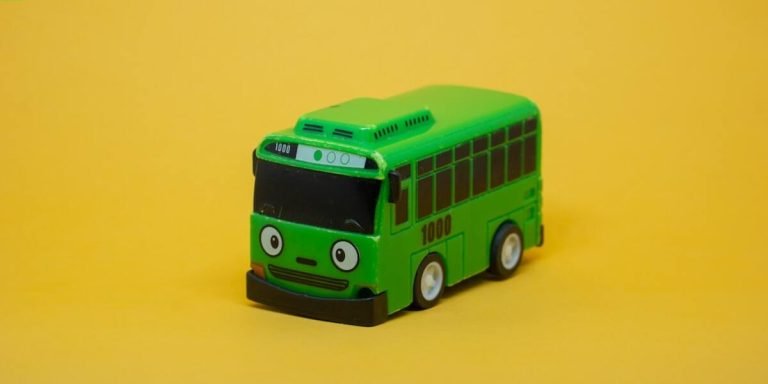1st Grade Curriculum: A Comprehensive Guide for Parents and Educators
Understanding the “1st grade curriculum” can be a complex task for parents and educators alike. It’s the foundation upon which young learners will start their educational journey, thus making it crucial to ensure that they receive all necessary guidance in this pivotal stage.
This blog post is designed as a comprehensive guide to provide an insightful look into everything you need to know about first-grade education. With this information, we aim to empower both parents and teachers with knowledge of what elements constitute good primary school teaching modules assisting them effectively during children’s initial step towards formal schooling.
Did you know?
Did you know that the first grade curriculum lays crucial groundwork for a child’s abstract thinking? At this stage, kids transition from pre-reading to building literacy skills by combining sounds and letters to form words.
Understanding the Core Components of a 1st Grade Curriculum
First grade marks a crucial stage in your child’s educational journey. It serves as the stepping stone from preschool education into an organized and structured learning environment, playing a vital role in setting up foundational knowledge that will be built upon throughout their academic life. This is where they first encounter what may seem like complex subjects – reading comprehension, basic mathematics, science explorations – all within the context of a 1st-grade curriculum.
The core components of this curriculum are strategically designed to cater to seven-year-olds’ curiosity and thirst for discovery while nurturing key social skills such as teamwork and group participation which fosters good relations with peers. The three main areas of focus are literacy, numeracy & scientific exploration; each subject tailored towards enhancing cognitive abilities pertinent to this age bracket.
Literacy lessons at this level delve deeper than just recognizing letters or simple word formations experienced during kindergarten years. They often encompass teaching children how to read efficiently using phonics and sight words while gradually introducing vocabulary expansion strategies alongside grammar basics such punctuation usage plus sentence structure rules among others.
The Basics of Literacy: Building Reading Skills
Recognizing the fundamental role literacy plays in a child’s academic and personal growth, it is crucial to focus on building reading skills as part of the 1st grade curriculum. Reading is not just about deciphering words; it’s also about understanding contexts, making connections, and fostering imagination.
The first step involves mastering basic phonics. This includes recognizing letters both separately and when they’re combined into syllables or full words. Teaching these components using captivating stories or enjoyable rhymes can make them more engaging for young learners.
Listening comprehension forms another essential element at this stage of education. Listening to an adult read aloud helps children comprehend storylines better, predict outcomes accurately, understand characters profoundly – all core parts of literary appreciation that will be further developed through their educational journey.
Children in 1st grade should also begin fluently reading simple sentences with familiar vocabulary by the end of the school year — marking a critical milestone in their learning process while moving towards becoming independent readers.
Vocabulary expansion happens parallelly during this phase where introductory sight word lists are given attention. When students begin associating frequently seen words without sounding them out each time – known as ‘sight-reading’ – they develop improved fluency levels which aid smoother transition across grades.
Lastly but equally important: nurturing love for books! Encouraging youngsters early on develops a lifelong habit aligning perfectly with any well-rounded 1st-grade curriculum aiming to foster future enthusiasts rather than merely fluent readers!
Grasping Numbers: An Overview of Math Fundamentals
In a child’s development journey, understanding the 1st grade curriculum plays an integral role. One of these core subjects is mathematics – fundamental to not just academics but life in general.
Let’s talk about . Mathematics at this level focuses on developing numerical fluency and comprehension skills among children. It isn’t merely recitation from one to hundred; rather it paves way for critical cognitive skills that influence logical thinking as well.
Number recognition is crucial in first-grade math learning, where kids start by identifying digits up to 100. They not only learn what numbers represent but also gradually comprehend how they come together or split apart through simple addition and subtraction problems.
Children are taught basic counting principles like sequencing, object correlation with its number counterparts etc., which boost their mental arithmetic abilities considerably over time.
Spatial concepts such as recognizing patterns too form part of math fundamentals here. For instance – determining if there’s a pattern within sequences like odd/even numbers or predicting what comes next after viewing various shapes arranged sequentially helps solidify early abstract reasoning capabilities.
First graders also begin exploring different measurement units like length, weight & volume along with studying basic geometric figures (2D/3D). This aids them establish real-world connections between classroom knowledge and everyday surroundings thereby fostering practical application based perspective towards problem-solving tasks later.
Above everything else though remains building confidence! Nothing encourages students more than overcoming obstacles independently when dealing with previously tough-looking mathematical challenges!
Integrating Science and Social Studies into Early Education
As we delve into the complexities of a 1st grade curriculum, it becomes crucial to assess how various subjects can be effectively integrated into early education. One such integration involves merging Science and Social Studies. In today’s rapidly evolving world, where our understanding of nature is intertwined with societal developments; these two disciplines play an essential role in shaping young minds.
Science embodies exciting experiments and explorations that spark curiosity among first graders. Introducing them to simple concepts like life cycles or changes in weather not only encourages their questioning spirit but also promotes cognitive growth at this tender stage. On the other hand, social studies provides children opportunities for developing cultural awareness and empathy towards diverse societies from around the globe.
Incorporating science within social studies makes learning more engaging for young students while enriching their growing worldview dynamically. Imagine teaching principles of conservation through stories about different cultures practicing sustainable living! Such overlap between subjects paves way for meaningful connections that constitute quality education – something every first-grade student deserves during their initial steps inside elementary school classrooms in 2023.
Discovering the Natural World: Science for Young Minds
As part of a comprehensive 1st grade curriculum, young learners should be exposed to science and social studies in an engaging way. The section will explore how these subjects can effectively be incorporated into early childhood education.
Early exposure to scientific concepts like cause and effect, observation, hypothesis formation encourages kids’ inherent curiosity about their natural surroundings. Experiments that involve observing plant growth or examining weather patterns provide hands-on learning experiences making them active participants rather than passive receivers.
Incorporating various landscapes – forests, deserts, oceans – as classroom themes help spark children’s interest in diverse ecosystems. By connecting everyday activities with broader environmental topics such as recycling or conservation creates strong foundations on which more complex ecological understanding can build upon later.
Equally important is imbuing children with historical perspectives from a tender age through Social Studies syllabus woven seamlessly within the 1st-grade curriculum. Simple storytelling sessions involving community helpers role-play or discussing local festivals ensure they develop empathy towards different cultures and lifestyles while respecting diversity.
Exploring Community and Culture: Social Studies for First Graders
As part of a comprehensive 1st grade curriculum, exploring community and culture through social studies is key. This gives the child an understanding of their surroundings – local communities to global cultures. In this digital age where physical boundaries are increasingly blurred, this awareness forms an essential element in early education.
First graders can begin by examining their immediate world—family units, neighborhoods, schools, even grocery stores or parks they frequent—all these play important roles in shaping young minds’ perceptions about society. Educational visits to museums or historical sites could add layers of practical knowledge on top of theoretical learning.
Storytelling sessions centered around stories from different cultures offer deep insights into traditions and customs beyond one’s own backyard while engaging them actively. Encourage your learners also to share family anecdotes which connect them with cultural roots bringing forth personal connections with broader concepts taught under social studies.
Discussing holidays celebrated around the globe exposes children not just towards multicultural acceptance but piques curiosity regarding how societies function differently yet harmoniously at large scales. From Diwali in India to Thanksgiving Day celebrations back home – diversity becomes intrinsically woven within classrooms discussions thus refining perspective taking abilities among students.
Furthermore introducing basic geography lessons like reading maps instills spatial thinking skills that sit fundamental for later complex geographical topics coming up as per sequential progression outlined under a balanced 1st-grade curriculum plan focusing on elementary school education rooted strong enough allowing future expansions upon basics established now.
Enhancing Creative Expression and Physical Development
In the midst of academics and learning strict rules, it’s essential to ensure that a 1st grade curriculum also fosters creativity and physical growth. With an increased emphasis on standardised tests these days, educators might struggle with striking this delicate balance. However, as we navigate in the era of robust education reform and oodles of research evidence favouring comprehensive approaches in 2023 – there has never been a better time to emphasise enhancing creative expression and physical development.
Physical development cannot be overlooked either – by fusing interactive games during school hours helps stimulate motor abilities while providing much-needed recess from rigorous classroom sessions simultaneously making kids look forward excitedly towards ‘school’ every day! Several studies have affirmed benefits like enhanced concentration levels among students who actively engage in physical activities amidst regular teaching periods—an insight even more relevant for our post-pandemic young learners trying hard to adjust back!
Hence, building up a first-grade syllabus should definitely incorporate varying types of play integrated directly into lesson plans along with traditional academic subjects—a prime focus given technology-driven sedentary lifestyles turn increasingly prevalent around us today!
Fostering Creativity Through Art and Music Lessons
The 1st grade curriculum for elementary school education in 2023 acknowledges the significance of nurturing creativity while developing physical prowess. Accordingly, incorporating art and music lessons into a child’s day-to-day learning is essential.
Artistic activities like drawings, paintings or craft projects are incredibly powerful tools that serve to stimulate a youngster’s imagination. They offer an opportunity not only to express feelings but also channel ideas innovatively. When children engage their minds creatively, they foster critical thinking skills necessary for problem-solving tasks- capacities that extend beyond the canvas onto academic subjects.
On the other hand, integrating music lessons as part of your child’s schooling helps facilitate emotional growth alongside intellectual development. By playing instruments or singing songs together in class, youngsters learn about different emotions communicated through various melodies and lyrics. Furthermore, engaging with rhythmical patterns enhances mathematical understanding subtly yet effectively!
In terms of advancing physical dexterity – fine motor abilities get honed naturally when kids indulge in refining sketches or moulding clay models during art classes; gross motor skills strengthen via playing musical instruments – be it strumming guitars lightly with fingertips or banging drums flexibly using arms.
Promoting Health with Physical Education Activities
Physical Education (PE) plays a key role in the 1st-grade curriculum. Being more than just a break from academic learning, it is essential for promoting health and physical development in young students.
Firstly, PE activities can help improve motor skills amongst 1st graders. This age group is at an ideal stage to develop gross motor skills such as running, jumping and skipping or fine motor skills like throwing or catching small objects. Simple games like hopscotch or jump rope can significantly enhance these foundational abilities.
Next on the list are strength-building exercises which may often be overlooked when teaching youngsters. Exercises that encourage bodyweight resistance – think bear crawls, push-ups against walls – have proven beneficial effects on skeletal muscle development amongst this young demographic.
Balance-related tasks should also form part of any well-rounded PE program within your child’s first-grade curriculum- not only does balance play a fundamental role in all movements we perform but improved equilibrium has been linked to enhanced cognitive function too!
Cardiovascular fitness shouldn’t be forgotten either! Engaging children with fun aerobic activities early on sets them up for healthy habits later down the line while improving their heart-health simultaneously.
Importantly though – always remember that enjoyment must lie at the core of every lesson plan involving Physical Education Activities- without joy there’s no engagement and thus growth becomes limited; keep things light-hearted yet structured if you want to see tangible progress happen right before your eyes!
Conclusion
Navigating through a 1st grade curriculum can seem like decoding hieroglyphics sometimes. However, equipped with this knowledge and understanding of what it entails ensures that you’re not just passively waiting for report cards to see how your child or pupil is progressing.
So there you have it – an owner’s manual to the 1st grade syllabus! We hope this comprehensive guide will be instrumental in enhancing your interaction with first graders’ education. Remember, we’re here every step of the way; so feel free to explore our website further for more gold nuggets on childhood education strategies as well as general support guides for parents and educators alike.







